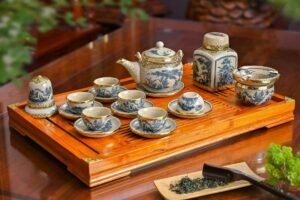
Tea Culture
Tea is thought to have originated in China around 2737 BCE, with a story involving the legendary Emperor


Tea is thought to have originated in China around 2737 BCE, with a story involving the legendary Emperor

Tea lovers know there are countless types and grades of tea to enjoy, each with its own unique character.

The word “chai” simply means “tea” in Hindi. What many of us call “chai tea” is actually

Matcha tea has become a global sensation, celebrated for its vibrant green color, unique flavor,

Tea has been enjoyed for centuries, not only for its flavor but also for its potential health benefits.

Black tea is a staple for tea lovers worldwide, prized for its rich, full-bodied flavor and

© 2025 YUGA NATURALS. All Rights Reserved